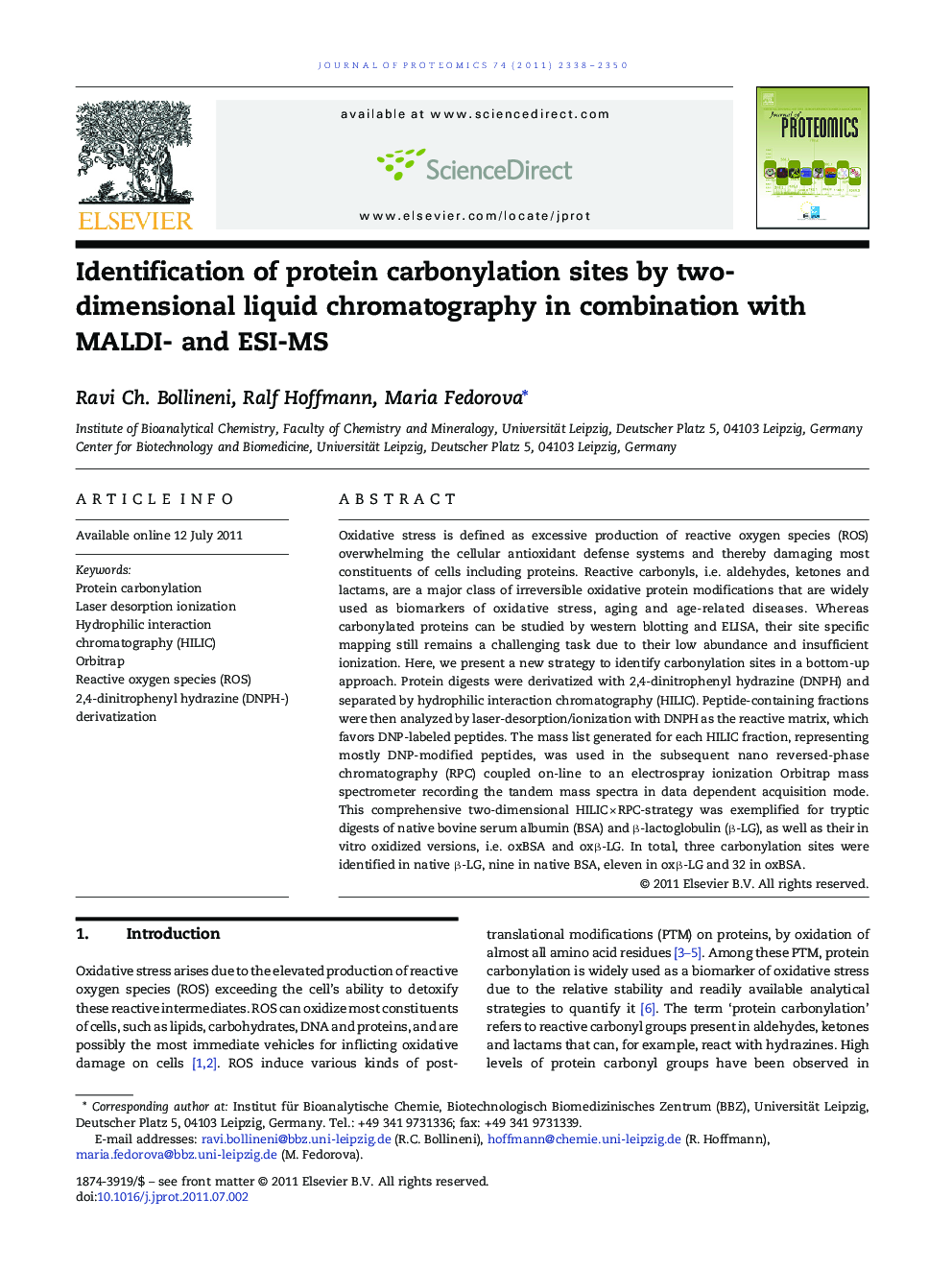| کد مقاله | کد نشریه | سال انتشار | مقاله انگلیسی | نسخه تمام متن |
|---|---|---|---|---|
| 1225405 | 968215 | 2011 | 13 صفحه PDF | دانلود رایگان |

Oxidative stress is defined as excessive production of reactive oxygen species (ROS) overwhelming the cellular antioxidant defense systems and thereby damaging most constituents of cells including proteins. Reactive carbonyls, i.e. aldehydes, ketones and lactams, are a major class of irreversible oxidative protein modifications that are widely used as biomarkers of oxidative stress, aging and age-related diseases. Whereas carbonylated proteins can be studied by western blotting and ELISA, their site specific mapping still remains a challenging task due to their low abundance and insufficient ionization. Here, we present a new strategy to identify carbonylation sites in a bottom-up approach. Protein digests were derivatized with 2,4-dinitrophenyl hydrazine (DNPH) and separated by hydrophilic interaction chromatography (HILIC). Peptide-containing fractions were then analyzed by laser-desorption/ionization with DNPH as the reactive matrix, which favors DNP-labeled peptides. The mass list generated for each HILIC fraction, representing mostly DNP-modified peptides, was used in the subsequent nano reversed-phase chromatography (RPC) coupled on-line to an electrospray ionization Orbitrap mass spectrometer recording the tandem mass spectra in data dependent acquisition mode. This comprehensive two-dimensional HILIC × RPC-strategy was exemplified for tryptic digests of native bovine serum albumin (BSA) and β-lactoglobulin (β-LG), as well as their in vitro oxidized versions, i.e. oxBSA and oxβ-LG. In total, three carbonylation sites were identified in native β-LG, nine in native BSA, eleven in oxβ-LG and 32 in oxBSA.
Figure optionsDownload high-quality image (78 K)Download as PowerPoint slideHighlights
► A new 2D-LC set up in combination with MALDI and ESI-MS has been developed for identification of carbonylation sites.
► DNPH used as a reactive matrix selectively enhanced ionization of low abundant DNPH derivatized carbonylated peptides.
► Three carbonylation sites were identified in native β-LG, nine in native BSA, eleven and 32 in oxidized β-LG, BSA respectively.
► We conclude that this method allows carbonylation site specific mapping with high sensitivity, and reproducibility.
Journal: Journal of Proteomics - Volume 74, Issue 11, 19 October 2011, Pages 2338–2350